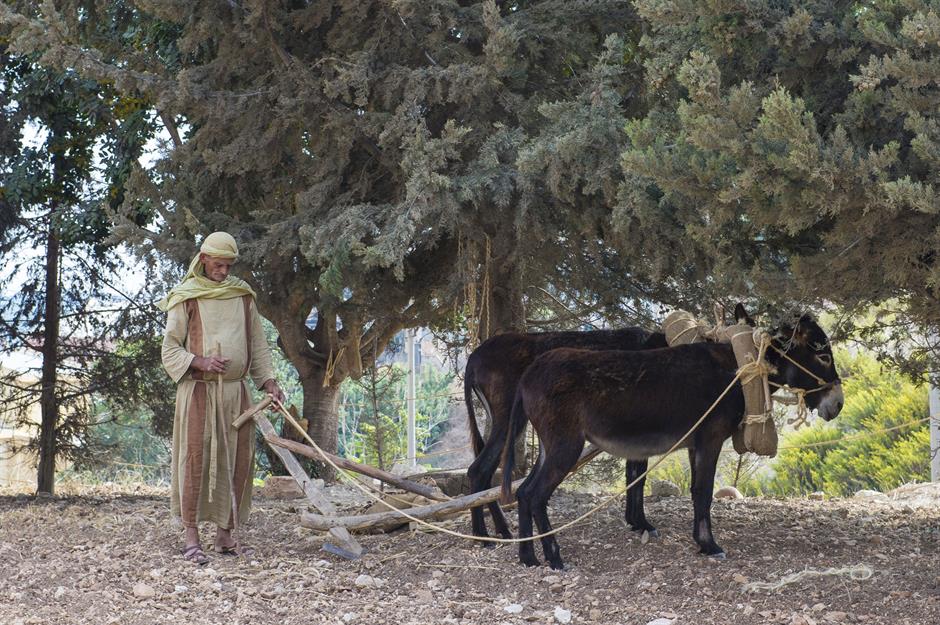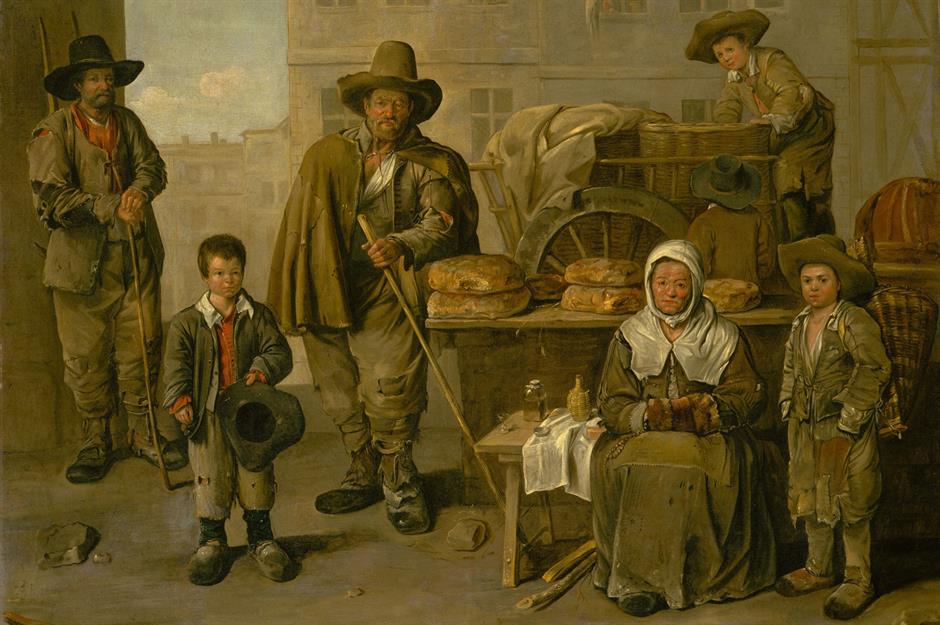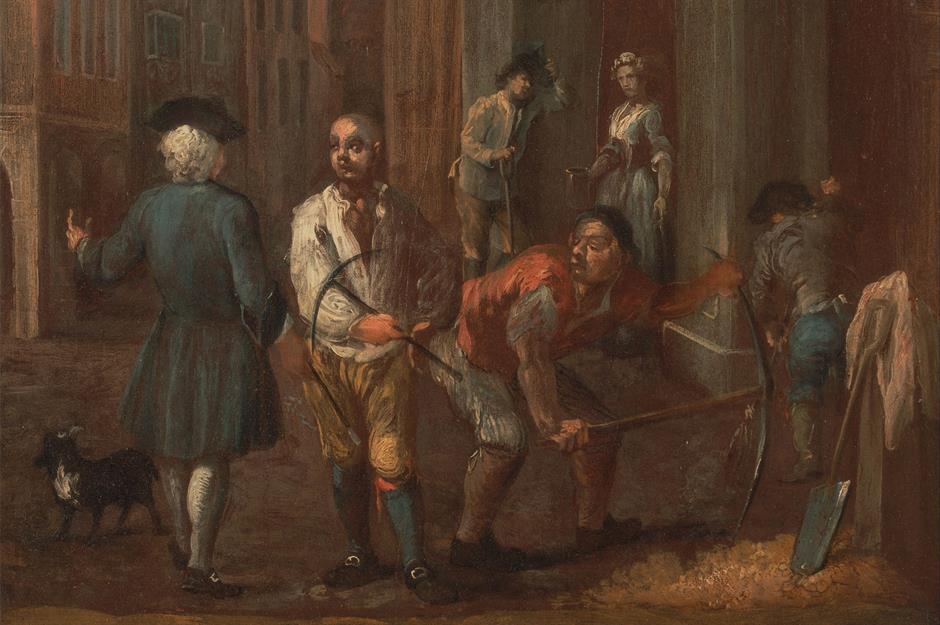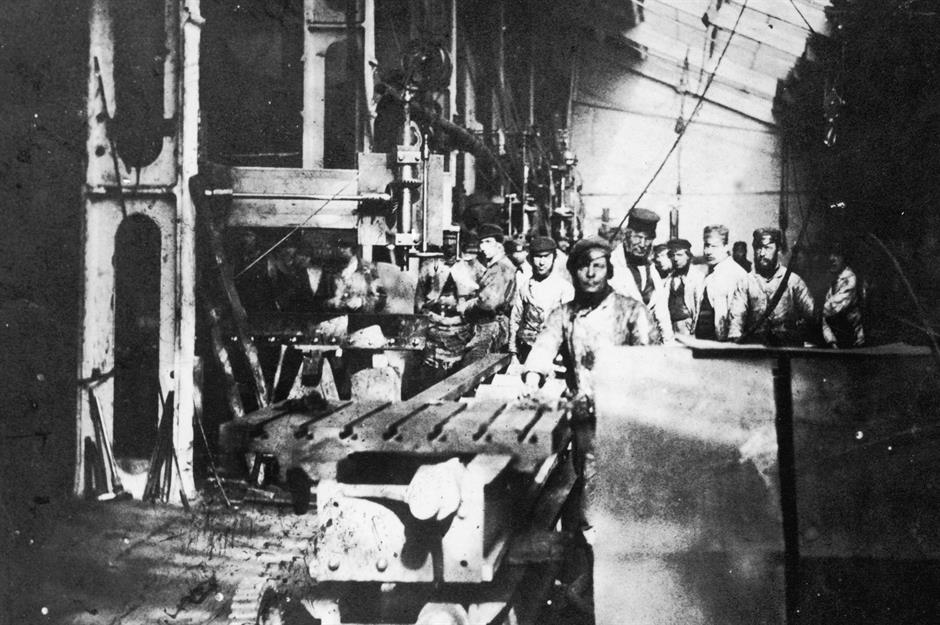How many hours did people really work across human history?
Typical working hours from the Stone Age to the present day

Hunter-gatherer in Stone Age Europe: three to five hours a day, 365 days a year

By looking at modern hunter-gatherers, anthropologists and archaeology experts estimate their prehistoric counterparts probably worked just three to five hours a day, though the hours worked are likely to have fluctuated wildly during the year...
Hunter-gatherer in Stone Age Europe: three to five hours a day, 365 days a year

If food was plentiful, say thanks to a glut of berries or following a big game kill, bygone hunter-gatherers probably worked even fewer hours. They would also have taken time off to perform religious rituals, bury the dead, dabble in cave painting, and other non-work activities.
Labourer in ancient Egypt: eight hours a day, 131 days a year

Labourer in ancient Egypt: eight hours a day, 131 days a year

Farm worker in ancient Israel: eight hours a day, 296 days a year

The typical farm worker in the Israel of 100 BC tended crops or engaged in other farm work for around eight hours a day. For a working day that began at dawn and concluded at dusk that's a heavy load, but three hours would have been set aside for prayer, while eating the day's main meal was likely to have taken an hour or so.
Farm worker in ancient Israel: eight hours a day, 296 days a year

Work was strictly forbidden on the Sabbath, as well as during a number of religious festivals: Rosh Hashanah (two days), Sukkot (a week), Shavuot (one day), and Passover (seven to eight days). Work was permitted at Purim, but many people would have spent the day enjoying the festivities. In addition, several work days a year are likely to have been taken off for weddings and other events.
Artisan in imperial Rome: six hours a day, 185 days a year

Slaves in imperial Rome were at the grindstone 24/7, but most free artisans only worked six hours a day, from 6am to midday. Not only that but festivals were frequent. In fact, according to some historians, Romans who were not in chains ended up working only half the year.
Artisan in imperial Rome: six hours a day, 185 days a year

Peasant in medieval England: eight hours a day, 150 days a year

Peasant in medieval England: eight hours a day, 150 days a year

Sunday was the day of rest, but peasants also had plenty of time off to celebrate or mark Christian festivals. Economist Juliet Schor estimates that in the period following the Plague they worked no more than 150 days a year.
Artisan in the 14th-century Aztec Empire: nine hours a day, 274 days a year

Workers in the Aztec Empire during the 14th century laboured away for four days, but didn't work on the fifth day when they went to the local market to stock up on provisions. They would also take time off to partake in religious festivals, many of which involved human sacrifice.
Now read: Royals who actually work for a living
Artisan in the 14th-century Aztec Empire: nine hours a day, 274 days a year

Labourer in 17th-century France: 10 hours a day, 185 days a day

Labourer in 17th-century France: 10 hours a day, 185 days a year

Unskilled worker in mid 18th-century England: 11 hours a day, 208 days a year

Unskilled worker in mid 18th-century England: 11 hours a day, 208 days a year

Factory worker in mid 19th-century England: 16 hours a day, 311 days a year

In contrast, the typical factory worker in mid 19th-century England toiled away for a shocking 16 hours a day, six days a week. Why the change? The Industrial Revolution was in full swing and factory owners could work their employees to the bone due to a lack of regulation and abundance of cheap labour.
Factory worker in mid 19th-century England: 16 hours a day, 311 days a year

Factory worker in mid 20th-century America: eight hours a day, 243 days a year

By the early 20th century, collective bargaining by unions and government regulation had resulted in much shorter working hours in the Western world. The typical working day in the 1920s had shrunk to eight hours. In America in 1926, auto pioneer Henry Ford cut the working week at his factories to five days after noticing productivity increased when his employees worked 40 rather than 48 hours.
Which states in America have the longest and shortest working weeks?
Factory worker in mid 20th-century America: eight hours a day, 243 days a year

Hunter-gatherer in late 20th-century Botswana: six hours a day, 130 days a year

Hunter-gatherer in late 20th-century Botswana: six hours a day, 130 days a year

Hunter-gatherer in late 20th-century Venezuela/Colombia/Brazil: three hours a day, 349 days a year

Hunter-gatherer in late 20th-century Venezuela/Colombia/Brazil: three hours a day, 349 days a year

Tech worker in early 21st-century China: 10 hours a day, 297 days a year

Tech worker in early 21st-century China: 10 hours a day, 297 days a year

Office worker in early 21st-century Netherlands: 5.8 hours a day, 234 days a year

Office worker in early 21st-century America: 6.9 hours a day, 239 days a year

Office worker in early 21st-century America: 6.9 hours a day, 239 days a year

Unlike workers in Europe, who enjoy plenty of paid leave guaranteed by legislation and aren't afraid to take it, American workers average just 12 days off per year and refrain from work on 10 public holidays. Incredibly, US law doesn't actually require employers to grant their staff paid leave of any kind.
Working from home during the Coronavirus pandemic inUS or UK: up to 11 hours per day, up to 239 days a year

When the COVID-19 pandemic swept the globe, most countries issued stay-at-home orders. While some employers had to furlough workers as they couldn't adapt to working outside of the workplace, many businesses pivoted to a working from home model, and lots of people are still working from home offices. While officially working hours remain the same, there have been growing reports that people working from home have ended up working longer hours than usual.
Working from home during the Coronavirus pandemic inUS or UK: up to 11 hours per day, up to 239 days a year

In fact, home workers in the US, Canada, Austria and the UK have seen the amount of time they are logged into their computers increase by more than two hours per day, according to research by NordVPN Teams. Workers in the US and UK have seen their working day increase from nine hours on average to 11 hours.
Now read: The hardest-working nations in the world
Comments
Be the first to comment
Do you want to comment on this article? You need to be signed in for this feature